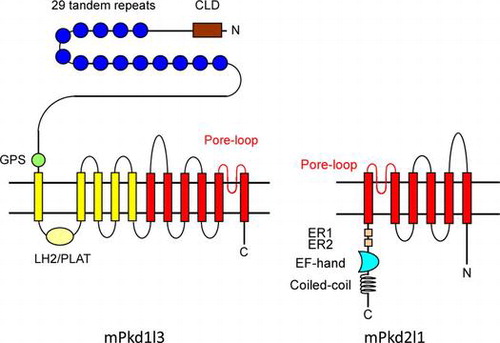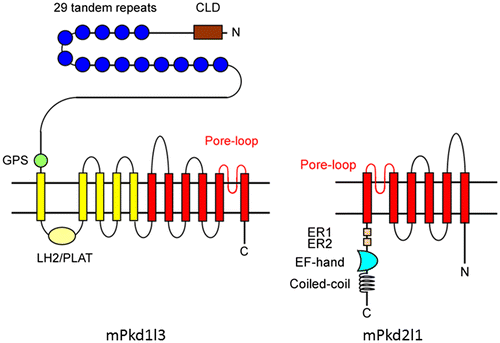Figures & data

Fig. 1. Schematic drawing illustrating conformational structures of Pkd1l3 and Pkd2l1.
Notes: Mouse Pkd1l3 is predicted to have 11 transmembrane domains, and contains an N-terminal CLD, 29 S/P-rich repeats, a GPS, and a LH2/PLAT domain. Note that human PKD1L3 does not contain S/P-rich repeats, even in its genomic sequences. Pkd2l1 is predicted to have six transmembrane domains and contains a putative Ca2+ binding EF hand motif and predicted coiled-coil domain in its C-terminal cytoplasmic tail. CLD, C-type lectin domain; S/P-rich repeats, serine/proline-rich repeats; GPS, G-protein-coupled receptor proteolytic site; PLAT, polycystin-1-lipoxygenase-alpha toxin; LH2, lipoxygenase homology 2; ER, endoplasmic recticulum retention signal; EF hand, calcium-binding domain. Portions of this Figure were modified from Fig. in Delmas et al.Citation44)

